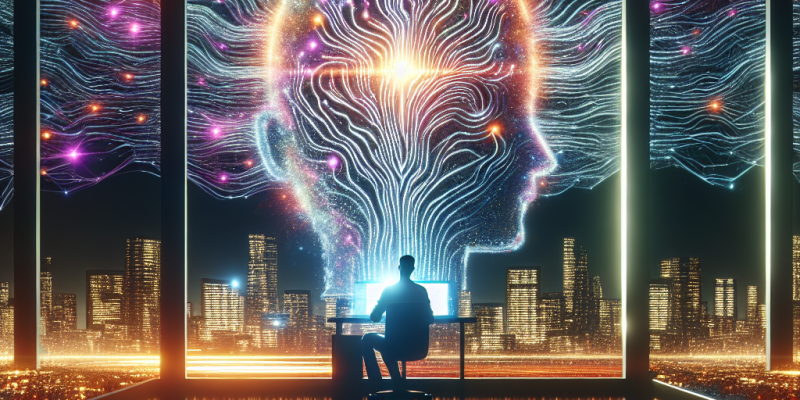The Future of Content Creation: Exploring the Impact of Generative AI Models

In the ever-evolving landscape of technology, the rise of generative AI models has heralded a new era for content creation. These advanced algorithms, capable of producing text, images, music, and even video, are reshaping how we conceive, produce, and consume content. As we look to the future, it’s essential to examine the profound implications of this shift, exploring both the opportunities and challenges that generative AI presents to creators and consumers alike.
Revolutionizing Content Production
Generative AI models, such as OpenAI’s GPT-3, DALL-E, and other emerging platforms, have showcased their ability to generate high-quality content across various mediums. These models rely on vast datasets to learn and understand patterns, nuances, and styles, enabling them to produce coherent and contextually relevant material. The implications for content creators are revolutionary:
-
Efficiency and Speed: Traditional content creation processes can be time-consuming and labor-intensive. Generative AI streamlines this workflow, allowing creators to generate drafts, brainstorm ideas, and enhance existing work at an unprecedented speed. This efficiency could enable content teams to focus on strategy and creativity, rather than mere production.
-
Accessibility: With generative AI tools becoming more user-friendly, individuals without formal training in creative fields can produce professional-grade content. This democratization of content creation allows a broader demographic to participate in storytelling, art, and multimedia, breaking down barriers and encouraging diverse voices.
- Personalization and Customization: AI can analyze user preferences to tailor content to individual tastes. This capability opens new avenues for personalized marketing, education, and entertainment. By using real-time data, brands can deliver customized experiences that resonate with their audiences on a deeper level.
The Rise of AI-Generated Content
As generative AI continues to advance, the advent of AI-generated content is becoming increasingly prevalent. From AI-created articles and social media posts to realistic images and even music, the lines between human and machine-generated content are blurring:
-
Content Libraries and Automation: Businesses can leverage AI to automate routine content generation, such as product descriptions, reports, or social media updates. By utilizing AI, teams can maintain a steady stream of content while minimizing the workload on their staff.
-
Creative Collaborations: Instead of viewing generative AI as a replacement for human creativity, many artists and writers are embracing these models as collaborators. The blend of human intuition with AI capabilities can lead to unique artistic expressions and innovative storytelling methods.
- Interactive Experiences: AI’s potential in gaming and interactive media is significant. By using generative models, game developers can create dynamic, responsive environments that adapt to player choices, enhancing immersion and engagement.
Ethical Considerations and Challenges
Despite the promise of generative AI in content creation, several ethical and societal challenges must be addressed to ensure responsible use:
-
Copyright and Ownership Issues: The question of ownership becomes increasingly complex as AI generates content. Who owns the rights to AI-created materials? Should AI-generated content be attributed to the developers, or does it belong to the users utilizing it? Establishing clear legal frameworks will be essential to address these concerns.
-
Quality Control and Authenticity: While generative AI can produce high-quality content, the potential for misinformation and low-quality outputs exists. As consumption of AI-generated media increases, it’s vital to maintain standards of accuracy and authenticity to uphold trust in content.
- Unemployment and Skill Displacement: The efficiency of generative AI may lead to concerns about job displacement in content creation roles. While AI can augment human capabilities, it is essential to consider how to retrain and reskill workers to adapt to this changing landscape, focusing on uniquely human skills like creativity and emotional intelligence.
Looking Ahead
As we move further into the era of generative AI, the possibilities for content creation are both exciting and daunting. Embracing these technological advancements will require a balanced approach that encourages innovation while addressing the ethical implications they pose.
In the next decade, we may witness a landscape where human creativity and generative AI coexist, enhancing the richness of our cultural discourse. The future of content creation will not simply be dictated by the tools we use but by our ability to navigate the opportunities and challenges that arise in this dynamic interplay between technology and humanity.
As creators, consumers, and stakeholders in this digital ecosystem, we must remain vigilant and proactive, championing the responsible development and use of generative AI. By doing so, we can ensure that the future of content creation is not only innovative but also inclusive, ethical, and reflective of the diverse tapestry of human experience.














